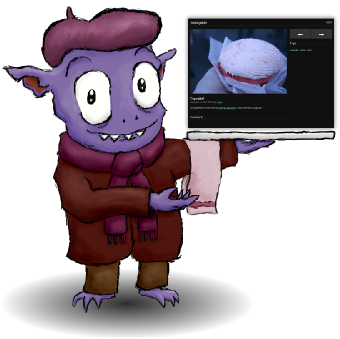
Installing GNU MediaGoblin (over and over again)
Here I document how to install the GNU MediaGobin 0.9.0, The Three Gobliners on Debian GNU/Linux.
- Official installation instructions for GNU MediaGoblin at readthedocs.io
- MediaGoblin has a MediaWiki too: https://wiki.mediagoblin.org/Deployment
Why over and over again?
Short answer: The installation instructions given are required to be read to be completely understood. So I’ll be installing again a third time.
- GNU MediaGoblin 0.8.0 I accidentally set to use SQLite, instead of Postgresql the intended database backend. No migration script exists so reinstall was needed
- GNU MediaGoblin 0.9.0 I managed to install the 0.9.0 using Py2 instead of Py3.
GNU MediaGoblin 0.9.0 with python3 version is what I am aiming at the third time around installingUPDATE: Seems installation of GNU MediaGoblin 0.9.0 with python3 support is currently impossible if the idea was to use flup and fcgi. Follow this ticket for updates on the situation.
Since the installation using python3 is impossible at the moment I have installed the py2 version instead at https://media.consumium.org. using py2, Nginx and fcgi for serving content.
Previously installed on the server are Nginx for webserver with TLS security enabled. Services already running on the server are https://hub.consumium.org (Hubzilla), https://d.consumium.org (diaspora), https://social.consumium.org (GNU social) and https://friendica.consumium.org so some of the dependencies are likely there.
I run into some problems which caused that the Postgresql cluster was not created and started. I got good help from StuckMojo @ #postgresql @ freenode irc.
I fixed the situation by running
- ‘nano /etc/locale.gen’ and uncommented the Finnish and US English locales
- ‘sudo locale-gen’ generated the locales according to /etc/locale.gen
- ‘sudo pg_createcluster –locale=en_US.UTF-8 9.4 main’ creates the cluster and
- ‘sudo pg_ctlcluster 9.4 main start’ starts the cluster
- check its status with ‘sudo pg_lsclusters’
Now should be ready to create the database user and the database.